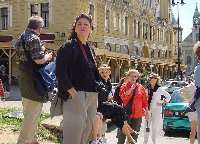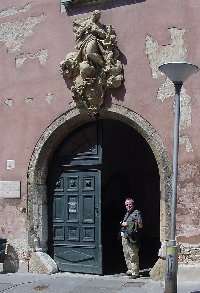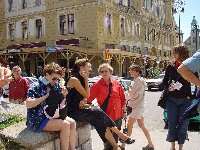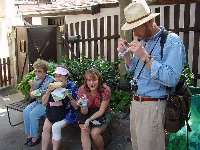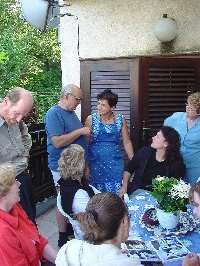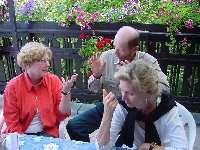Director of the Institute
Humanities, East Campus
|
2001 Summer Institute: Discovering Eastern Europe I was fortunate to participate in the first Valencia Summer Humanities Institute and I have continued to be a part of it through my colleagues' experiences and their involvement in the following two Institutes. Over the last three years, Valencia faculty has explored Latin American Women, Africa, and China. I felt that we needed to take the Institute to a different place, perhaps one not so obvious but one that was as important. I proposed an Institute that focused on Eastern European art and culture. All the texts that I teach from barely reveal the treasures that can be found in Prague, Budapest, Krakow, and other Eastern European capitals. I felt that Eastern and Central Europe was a topic that could be linked directly to the courses taught by those who teach humanities, foreign languages, literature, film, and the fine arts. The music, art, architecture, and literature created in Eastern Europe could enrich courses dealing with topics ranging from the Middle Ages to the 20th century. The subject of our Institute would cover the history of nations that survived various forms of oppression, destruction and desolation, and the loss of national identity, but were reborn -- as it were -- in the years after the dramatic events of 1989. Suggesting the topic for the Institute, I believed that by examining and studying the history of any particular people from the region, we would find their story in the things that they created and left behind. With old walls broken down, new borders created, new forms of government established, and the long-suppressed freedom of expression reemerging in restoration, renovation, and new ventures in the arts made possible by reviving economies, these areas of Europe entice us to investigate what had been lost to the West for much of the 20th century. It was my hope that the Institute would generate discussion and debate over the value and place that the art and culture of Eastern and Central Europe had played in our lives and in our past. I was certain that when we studied these diverse groups of people we would discover the influences of Eastern Orthodoxy, Judaism, and Islam on their arts and culture, influences that make them unique and at the same time add another dimension to the multicultural diversity of Humanities courses at Valencia Community College. I hope that the Institute's goals and expectations were met and exceeded, while its impact, only partially revealed by the comments of its participants in these Web pages, is evident in their teaching and scholarly work. |





